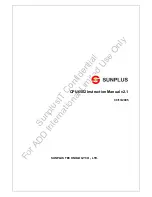
Bulb-based Position Light Signals (e.g. NJ International)
Wiring for bulb-based position light signals is shown in Figure 4. For example, if the input voltage is 12V and the bulbs are
rated at 1.5V (get this information from the manufacturer of the signal) then we would suggest a resistor value of 330 ohms,
1/2W (e.g Radio Shack #RSU 271-1113). If the input voltage is equal to or slightly lower than that of the bulbs then no
resistors are needed.
Figure 4 – Bulb-based position light signals
If your signal is an “absolute” type (that means it has
two red bulbs for the stop position while all others are
yellow) then you will have to cut the exposed lead on the
diode D4 shown in Figure 5 on the Signal Animator
board. Use a pair of diagonal cutters to make the cut. Be
sure that the two cut ends no longer touch each other by
separating them slightly. Failure to do so won’t cause
any damage but it may cause the center yellow bulb to
illuminate when the signal is in the stop position.
C
Y
R
G
A
C
G
N
D
D
C
+
5
V
P
C
Figure 5 – cutting diode D4 for absolute type signals
LED-based Position Light Signals (common anode wiring)
The position light signal head is
shown as a circle on the right-hand
side of the drawing in Figure 6.
Within the signal head are the seven
LED “lights”; if you have a B&O
style color position light signal then
it will not have a center LED and
you will not use the C terminal on
the Signal Animator. The value of
the current limiting resistors
depends upon the value of the input
voltage to the Signal Animator. For
a 9V AC or 12V DC input voltage
we recommend a resistor value of
330 ohms, 1/2W (e.g. Radio Shack
#271-1113). Use a higher value for
the center LED; we recommend a
value of 680 ohms (e.g. Radio Shack
#271-1117).
Figure 6 – LED-based position light signals (common anode wiring)























